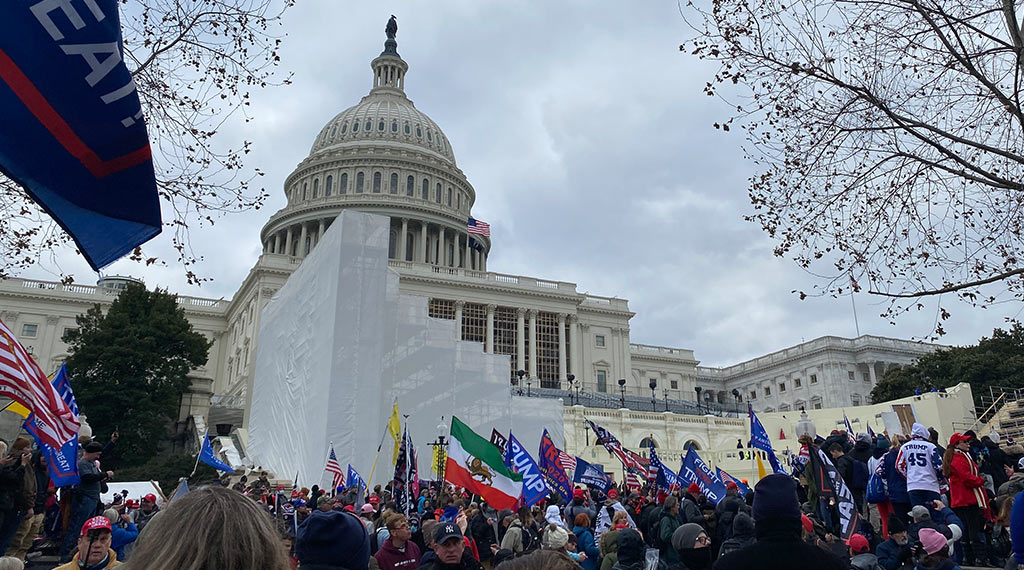J6: What we knew then, and what we know now

We take a lot of heat for what we do at the Center for Security Policy, but our eyewitness account of the violence at the U.S. Capitol two years ago provoked an especially intense response.
The Center’s report concluded that a handful of agents-provocateurs executed the violence, which was planned and coordinated in advance, and exacerbated by a lack of intelligence, poor discipline, and poor leadership from Capitol Police. We also directly confronted the false narrative of “thousands of armed insurrectionists.”
How does our first-person report, written by our senior analyst for strategy hours after the event took place hold up after two years of criminal investigations, congressional hearings, and media reports?
The Federalist reprinted the report the day after we posted it. Senator Ron Johnson (R-WI) read portions into the record at the first Senate investigative hearing.
Senator Amy Klobuchar, co-chairman of the Senate panel investigating the violence, called our report and Johnson’s questions “disinformation.” Senate Majority Leader Chuck Schumer foamed that it was “mindless garbage.” CNN slammed our evidence as a baseless conspiracy theory.
Not the first time the willingness of the Center to call it as we saw it has provoked hysterics among those pushing false narratives.
But Johnson asked a senior FBI official if our analysis made sense and FBI Assistant Director Jill Sanborn surprised Johnson by confirming Center’s report “absolutely” reflected what the Bureau had found. There were no tens of thousands of armed insurrectionists. There were a small number of provocateurs.
The report also told of suspected fake anti-Trump militants, but we didn’t suspect the FBI.
Then, some of those arrested and charged with leading the violence were identified as FBI informants and assets. When others posted videos of an apparent provocateur named Ray Epps goading people to attack the Capitol and leading the first confrontation at the outer security perimeter, the Center pushed for answers.
The break came when Sanborn, recently promoted to Executive Assistant Director of the FBI’s National Security Branch, was again scheduled to testify at a January, 2022 Judiciary Committee hearing. We worked with Senator Ted Cruz (R-TX) to shape questions that would get to the bottom of the allegations.
Cruz asked Sanborn directly: “Did any FBI agents of confidential informants actively participate in the events of January 6th? Yes or no?”
Sanborn: “I can’t answer that.”
Cruz kept pressing hard. A simple “no” would have ended the matter. In the 3-1/2 minutes of questioning, the FBI official would not budge.
The FBI never provided senators with an answer afterward. And the Bureau has obfuscated ever since. Cruz’s questions – and the FBI’s reaction – changed the terms of debate about who was behind the violence at the U.S. Capitol.
The evidence now suggests that the FBI knew about the prospect for violence well in advance but did not inform the U.S. Capitol Police or the Secret Service, which was at the Capitol on January 6 to provide security for Vice President Mike Pence.
And at a Senate Judiciary Committee hearing, the FBI official in the best position to know refused to answer if the FBI itself was involved in “criminal acts of violence” at the Capitol on J6.
The video of Senator Cruz grilling the FBI made C-SPAN’s Top 10 most-watched videos for 2022.
We have hundreds of new questions for Congress to ask in 2023.
- LIVE NOW – Weaponization of US Government Symposium - April 9, 2024
- CSP author of “Big Intel” is American Thought Leaders guest on Epoch TV - February 23, 2024
- Four weeks after release, Big Intel remains a #1 Amazon bestseller - February 13, 2024
